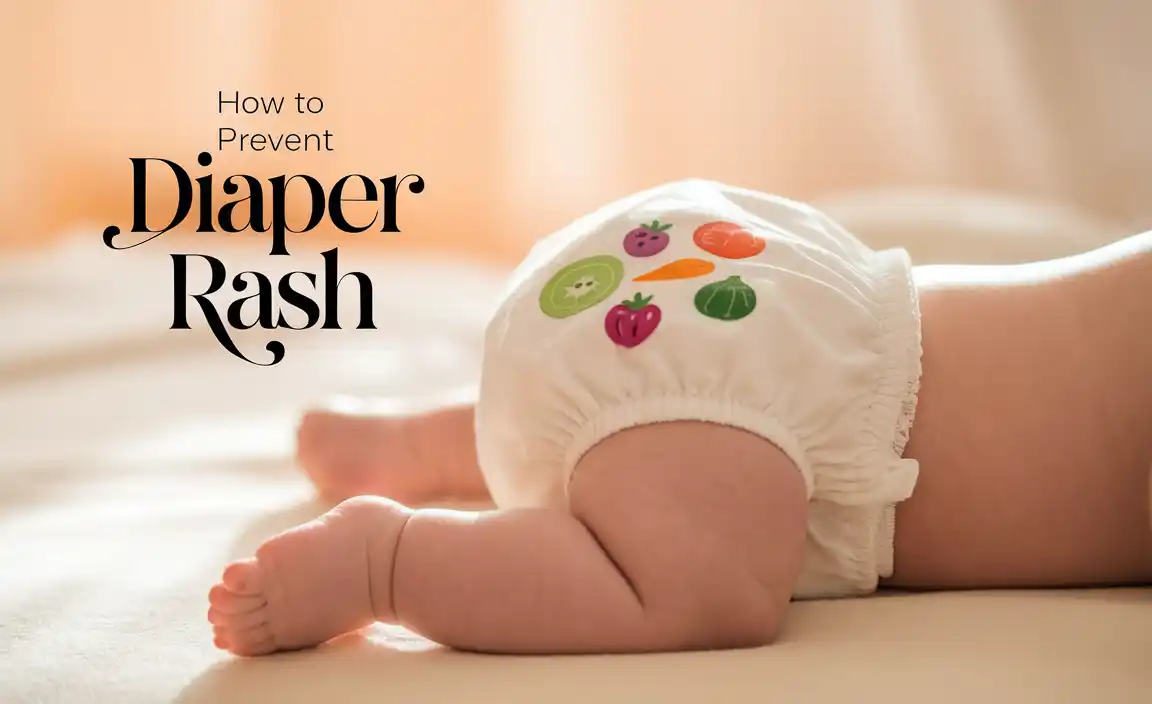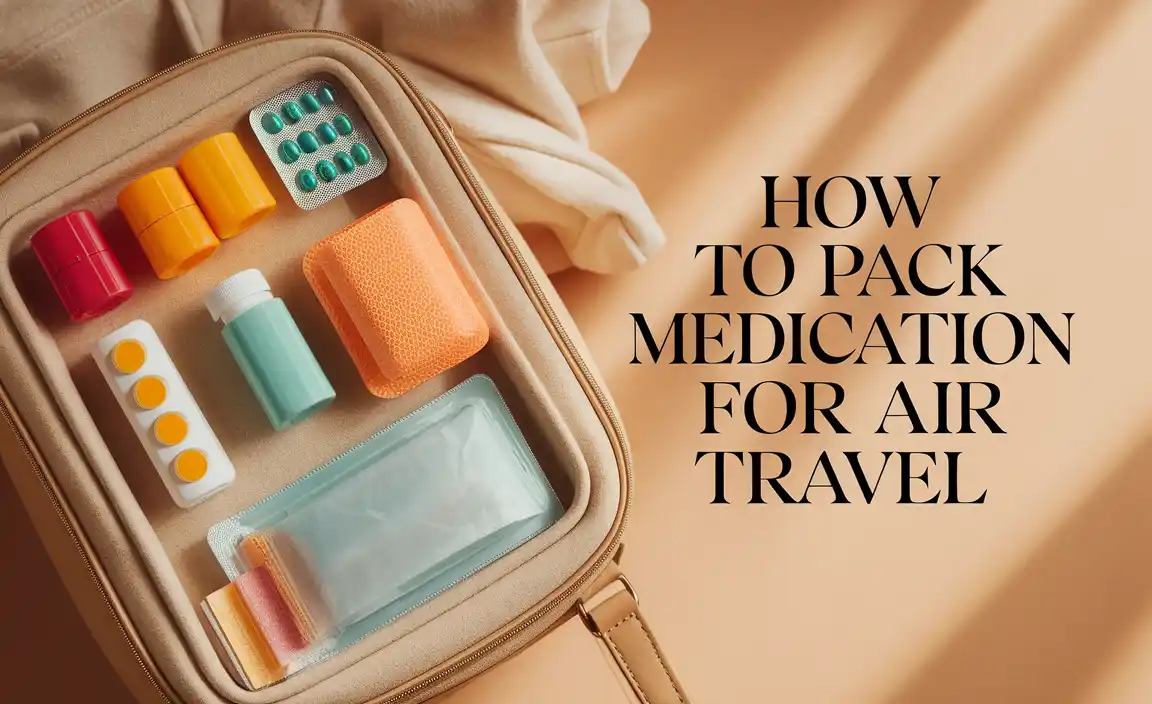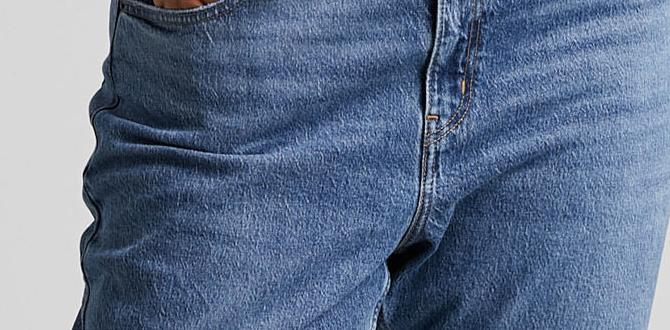Adult diapers with soft lining provide essential comfort by offering gentle skin contact, superior absorbency, and discreet protection, ensuring peace of mind and freedom during travel or daily activities.
Planning a trip or navigating daily life shouldn’t be stressful. Sometimes, unexpected needs arise, and finding the right personal care solutions makes all the difference. If you’re looking for ways to ensure comfort and confidence, especially during extended periods away from home or for long days, understanding the benefits of adult diapers with soft lining is crucial. These products are designed with your well-being in mind, offering a blend of protection and gentle care that can truly enhance your experience. We’ll explore exactly why this feature is so important and how it can help you move through your day with ease.
Why Soft Lining Matters for Comfort and Skin Health
When we talk about adult diapers, the primary function is absorbency and leak protection, which are undeniably critical. However, the material that directly touches your skin plays a massive role in overall comfort and preventing secondary issues. This is where the soft lining comes into play, acting as a gentle barrier between sensitive skin and the absorbent core.
Discovering adult diapers with soft lining can significantly elevate your comfort level, whether you’re on a long flight, enjoying a day out, or simply need reliable protection at home. The difference is in the feel – it’s like choosing a super-soft cotton t-shirt over a scratchy wool sweater. This subtle but powerful feature makes a world of difference for anyone seeking discretion, confidence, and most importantly, gentle care for their skin.
The Science of Softness: What Makes a Lining “Soft”?
The “softness” of a diaper lining isn’t just a marketing term; it’s a result of specific material choices and manufacturing processes. Typically, these linings are made from ultra-fine, non-woven fabrics. These fabrics are designed to be smooth to the touch, minimizing friction against the skin.
Here’s a breakdown of what contributes to that gentle feel:
- Material Composition: Many soft linings are crafted from polypropylene or polyethylene fibers. These are chosen for their ability to be spun into very fine threads, creating a fabric that feels silky rather than rough.
- Surface Texture: The weaving or bonding process used for these non-woven fabrics is optimized to create a smooth, uniform surface. This prevents snagging or irritating sensitive skin.
- Breathability: While focusing on softness, manufacturers also aim for breathability. A lining that allows air to circulate helps reduce moisture buildup, further contributing to skin comfort and health.
Why Soft Lining Prevents Irritation and Moisture Issues
Regularly wearing any type of incontinence product can, if not managed properly, lead to skin irritation, redness, or even breakdown. This is often due to friction, prolonged exposure to moisture, and a lack of airflow. A soft lining directly addresses these concerns.
Reduced Friction: The smooth surface of a soft lining glides against the skin, significantly reducing the rubbing and chafing that can occur with coarser materials. This is especially important for individuals who are less mobile, as they may experience more constant contact.
Moisture Wicking: High-quality soft linings are designed to quickly wick moisture away from the skin and into the absorbent core. This keeps the skin surface drier, which is a fundamental step in preventing irritation like diaper rash or incontinence-associated dermatitis (IAD). According to the National Institutes of Health (NIH), maintaining skin integrity and hydration is paramount in preventing skin breakdown, and effective moisture management is key to this.
Hypoallergenic Properties: Many soft linings are made from materials that are less likely to cause allergic reactions. This is a crucial benefit for individuals with sensitive skin who might react to certain dyes, perfumes, or rougher fabric textures found in less advanced products.
Key Features of Adult Diapers with Soft Lining
Beyond the gentle feel against the skin, adult diapers with soft lining often incorporate other features designed to enhance absorbency, comfort, and discretion. These are the hallmarks that make them a preferred choice for many.
Superior Absorbency and Leak Protection
While softness is key for comfort, the primary job of an adult diaper is to manage leakage effectively. Diapers with soft linings often boast advanced absorbent core technology to ensure they perform exceptionally well.
Rapid Absorption: The combination of a soft, skin-facing layer and a high-capacity absorbent core means that fluid is quickly drawn away from the skin. This prevents pooling and reduces the feeling of wetness.
Lock-in Technology: Modern diapers use superabsorbent polymers (SAP) within their cores. These SAP granules swell to form a gel when wet, effectively locking away liquid and odor. This technology is crucial for maintaining dryness and confidence.
Leak Guards: Most adult diapers feature elasticated leg cuffs, often called leak guards or leg barriers. These are designed to create a snug seal around the thighs, preventing leaks, especially during movement. Even with a soft lining on the inside, these external features are vital for complete protection.
A study published in the Journal of Wound Ostomy & Continence Nursing highlights the importance of absorbent products in managing incontinence and maintaining skin health. Effective fluid management, achieved through a combination of absorbent core technology and proper product fit, is consistently cited as a primary factor in preventing skin issues.
Discretion and Odor Control
Feeling confident and discreet is a major concern for many using adult diapers. The design of diapers with soft linings often prioritizes this.
Thin, Contoured Fit: Many soft-lined diapers are designed to be thin and contoured to the body, making them less noticeable under clothing. This allows for a more natural silhouette.
Odor Neutralizers: Beyond just absorbing liquid, many high-quality adult diapers incorporate materials or treatments that neutralize the ammonia odor associated with urine. This helps maintain freshness and confidence throughout the day.
Quiet Materials: The outer layers of diapers are often made from cloth-like materials that are quieter than plastic-backed options. This enhances discretion, especially in quiet environments.
Breathability for Skin Health
As mentioned earlier, breathability is a cornerstone of skin health when using incontinence products.
Airflow Channels: Some diaper designs include specific airflow channels within the absorbent core and the lining to allow air to circulate. This helps to prevent heat and moisture buildup, which are primary contributors to skin irritation.
Reduction of “Diaper Rash”: By keeping the skin drier and allowing it to breathe, soft-lined diapers can significantly reduce the incidence of redness, itching, and the painful skin conditions commonly referred to as “diaper rash” in adults. The NHS (National Health Service) guidelines on incontinence-associated dermatitis emphasize the importance of frequent changing and barrier creams, but also the role of breathable, effective products in preventing moisture retention.
Choosing the Right Adult Diapers with Soft Lining
With so many options available, selecting the most suitable adult diapers with soft lining can seem daunting. Here’s a guide to help you make an informed decision based on your specific needs.
Understanding Different Absorbency Levels
Adult diapers come in various absorbency levels, from light to maximum or overnight. The “soft lining” is a feature that can be found across all these levels. Your choice should primarily depend on the severity of incontinence you are managing.
| Absorbency Level | Typical Usage Scenarios | Key Considerations |
|---|---|---|
| Light | Dribbles, minor leaks, stress incontinence during light activity. | Often resemble protective underwear; very discreet. Soft lining crucial for comfort during extended wear. |
| Moderate | Heavier leaks, frequent urges, moderate incontinence. Suitable for daytime use. | Offers more absorbency. Soft lining enhances comfort and helps prevent skin issues from increased moisture. |
| Heavy/Maximum | Significant leakage, complete loss of bladder control, overnight use. | Designed for substantial fluid management. Soft lining ensures the skin stays as dry and comfortable as possible over extended periods. |
| Overnight | Designed for extended wear (8-12 hours) to provide uninterrupted sleep. | Prioritizes maximum absorbency and leak protection. Soft lining is vital to maintain skin health and comfort throughout the night. |
Fit is Key: Getting the Perfect Size
An improper fit can compromise the effectiveness of even the best diaper, leading to leaks and reduced comfort. It can also exacerbate friction.
Measure Your Waist and Hips: Most brands provide sizing charts. Carefully measure your waist and hips and compare these measurements to the chart to find your best fit.
Consider the Product Type: Diapers come in two main styles:
Protective Underwear (Pull-Ons): These look and feel more like regular underwear. They are generally more discreet and easier for those who are mobile. The soft lining is integrated into the inner surface.
Briefs (Tab-Style): These have adhesive tabs on the sides for a customizable fit. They are often preferred for heavier incontinence or for individuals who need assistance with changing. Again, the soft lining is on the interior.
Movement and Comfort: Ensure the diaper allows for comfortable movement without digging into your skin or feeling too restrictive. This is where the flexibility of the soft lining material plays a role.
Material Matters: Beyond the Lining
While the soft lining is a significant factor, also consider the other materials used in the diaper:
Outer Cover: A cloth-like outer cover is generally preferred for breathability and a quieter, more discreet feel compared to plastic-backed covers, though plastic may offer superior leak protection for very heavy needs.
Inner Materials: Look for descriptions that emphasize skin-friendly materials free from harsh chemicals, fragrances, or dyes if you have sensitive skin.
Trial and Error: Finding Your Favorite Brand
What works best for one person might not be ideal for another. It’s often beneficial to try samples or smaller packs from different reputable brands to see which ones offer the best combination of softness, absorbency, fit, and discretion for your personal needs.
Traveling with Adult Diapers with Soft Lining
Traveling requires careful planning, and ensuring you have the right personal care items is part of a stress-free journey. Adult diapers with soft lining can be invaluable travel companions, offering comfort, security, and discretion.
Packing Smart for Your Trip
Proper packing ensures you have enough supplies without overpacking or running out.
- Calculate Your Needs: Estimate how many diapers you’ll need per day, considering longer travel times, potential delays, and activities. It’s always wise to pack a few extra.
- Discreet Packaging: If you prefer more privacy, you can remove diapers from bulky outer packaging and place them in resealable bags or a dedicated toiletry bag. Ensure these bags are durable to prevent damage.
- Carry-On Essentials: Pack enough diapers for your journey (flight, train ride, long car trip) in your carry-on luggage. This is crucial in case your checked baggage is delayed or lost.
- Disposal Options: Research discreet disposal options at your destination. Many hotels offer small trash bins. For public restrooms or transport, a small discreet bag for soiled diapers is essential.
Comfort on the Go
Long journeys can test anyone’s comfort levels. Adult diapers with soft lining are designed to help.
Extended Wear: The superior absorbency and softness help maintain skin comfort during long periods of sitting, like on airplanes or in cars. This reduces the risk of irritation that can arise from being stationary.
Freedom and Confidence: Knowing you have reliable, comfortable protection allows you to focus on enjoying your trip rather than worrying about potential leaks or discomfort. This sense of security is paramount for stress-free travel.
Temperature Regulation: Breathable materials can help manage body temperature, which is often a concern in varying travel environments.
Staying Fresh and Clean During Travel
Maintaining hygiene is important, especially when using adult diapers.
Change Routinely: The general advice is to change diapers regularly, ideally before they are fully saturated. On a long journey, identify opportunities to change when feasible, such as during rest stops or in airplane restrooms.
Wipes and Sanitizer: Pack travel-sized wet wipes and hand sanitizer for easy cleaning and freshening up between changes. This is vital for hygiene and comfort on the road.
Barrier Creams: For added skin protection, especially on longer trips where changes might be less frequent than ideal, a thin layer of barrier cream can provide an extra layer of defense against moisture and irritation. Consulting a healthcare professional about the best type of cream for your skin is always a good idea.
Navigating Security and Customs
Travelers using medical supplies often have concerns about airport security.
Declare if Necessary: If you are carrying a large quantity of diapers for medical reasons, it might be advisable to check with the airline or the Transportation Security Administration (TSA) travel tips regarding medical supplies. Generally, personal medical supplies are permitted.
Keep in Original Packaging (if possible): While discretion in packing is often sought, keeping some items in their original packaging might help if they are questioned by security personnel, though this is rarely an issue with diapers.
Medical Identification:** If your incontinence is due to a medical condition, consider carrying a doctor’s note or medical identification card, though this is usually for more complex medical needs.
When to Seek Professional Advice
While adult diapers with soft lining are excellent solutions for comfort and management, they are part of a broader approach to health and well-being. It’s important to know when to consult a healthcare professional.
Skin Health Concerns
If you experience persistent redness, itching, sores, or any signs of skin breakdown despite using high-quality products, it’s time to seek medical advice.
Doctor or Nurse Consultation: A healthcare provider can diagnose the cause of the skin issue, which might be related to the product, skin hygiene, underlying conditions, or other factors.
Specialized Skin Care: They can recommend specific skin care routines, barrier creams, cleansers, or suggest alternative products that might be better suited to your skin’s needs. The Mayo Clinic offers comprehensive information on managing incontinence and related skin care issues, emphasizing the importance of professional guidance for persistent problems.
Changes in Incontinence
Sudden changes in the pattern or severity of incontinence can indicate an underlying medical issue that needs investigation.
Underlying Medical Conditions: Incontinence can sometimes be a symptom of urinary tract infections (UTIs), diabetes, neurological conditions, or other health problems.
* Treatment Options: A doctor can assess your situation and discuss various treatment options, which might include medication, physiotherapy (like pelvic floor exercises), or behavioral strategies, in addition to or instead of absorbent products.
Product Selection Guidance
If you are unsure about which type, absorbency level, or brand of adult diaper to use, a medical professional or a continence nurse specialist can provide personalized recommendations. They can assess your specific needs and help you navigate the available options to find the most effective and comfortable solution.
Frequently Asked Questions (FAQs)
Q1: How do I know if an adult diaper has a “soft lining”?
A1: Look for descriptions on the product packaging or manufacturer’s website that mention “soft lining,” “cloth-like inner layer,” “gentle feel,” “skin-friendly material,” or “ultra-soft.” Product reviews can also offer insights into the fabric’s texture.
Q2: Can adult diapers with soft lining still be discreet under clothing?
A2: Yes, many modern adult diapers with soft linings are designed to be thin and contoured. They often feature a cloth-like outer cover that looks and feels more like regular underwear, making them discreet under most clothing.
Q3: Are adult diapers with soft lining good for sensitive skin?
A3: Generally, yes. The soft lining is designed to minimize friction. Many are also made with hypoallergenic materials and are free from harsh chemicals, fragrances, and dyes, making them a better choice for sensitive skin compared to those with rougher inner surfaces.
Q4: How often should I change an adult diaper with a soft lining?
A4: It’s best to change the diaper as soon as it becomes wet or soiled to maintain skin health and comfort. For moderate to heavy absorbency diapers, this might be every 4-6 hours, or more frequently if needed. Always follow the guidance of a healthcare professional if you have specific skin concerns.
Q5: What is the main benefit of a soft lining compared to a plastic lining?
A5: The main benefit of a soft lining is enhanced comfort and reduced risk of skin irritation due to its smooth, gentle contact with the skin. While plastic linings might offer superior leak protection in some cases, they can sometimes feel less breathable and more prone to friction and noise.








